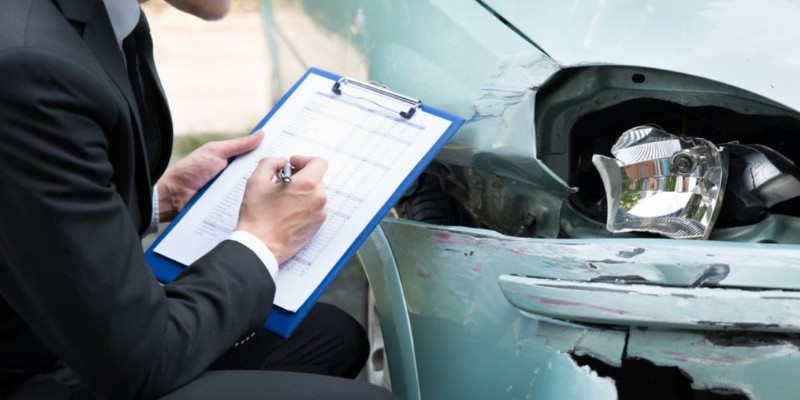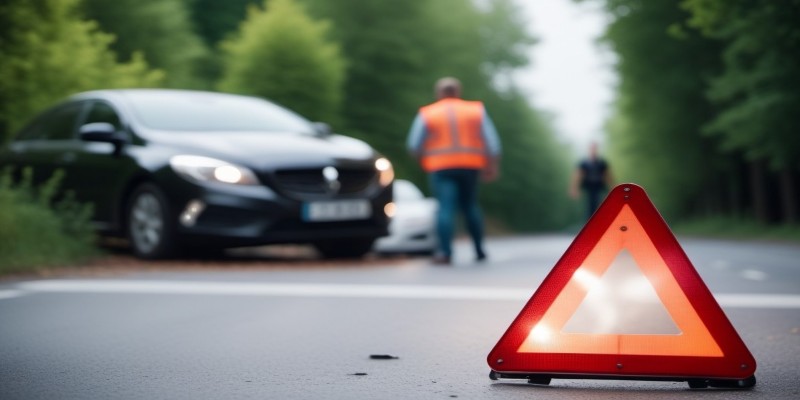How To File A Car Insurance Claim: A Step-By-Step Guide
Filing a car insurance claim can seem daunting, but it’s a straightforward process if you follow the steps carefully. Whether you’re involved in a minor fender bender or a major accident, knowing how to file a claim ensures you receive the financial support you need to repair your vehicle or cover medical expenses. This guide will walk you through the process of filing a car insurance claim, from the initial incident to the final settlement.
Step 1: Ensure Everyone’s Safety
The first and most important thing to do after an accident is to ensure that everyone involved is safe. Suppose you're able to check for injuries and assess the situation. If anyone is hurt, call emergency services immediately. The safety of all parties should always come first.

If possible, move the vehicles to the side of the road to prevent further accidents or disruptions to traffic. If the vehicles can't be moved, leave them where they are, but make sure to turn on the hazard lights. Avoid admitting fault at the scene, as this can affect your claim later.
Step 2: Gather Information
Once everyone is safe, begin gathering important details that will be necessary for your claim. Collect the following information:
Driver And Passenger Information:
This includes the names, contact details, and driver’s license numbers of all drivers involved in the accident.
Insurance Details:
Take note of the insurance company, policy number, and contact information for all drivers involved.
Vehicle Information:
Record the make, model, year, and license plate numbers of the vehicles involved in the accident.
Accident Details:
Note the time, location, weather conditions, and any other relevant circumstances surrounding the incident.

Step 3: Document The Accident Scene
Documentation is critical in any car insurance claim. Take clear and detailed photos of the scene from different angles. Include shots of the vehicles, any damage, nearby road signs, traffic signals, skid marks, and the overall environment. These images will serve as evidence to support your version of events.

If there is visible damage to your car, make sure to take close-up shots of these areas as well. The more evidence you collect, the easier it will be to process your claim and prove the extent of the damage.
Step 4: Notify Your Insurance Company
Once you have gathered all the necessary information and documentation, it’s time to contact your insurance company. Most insurers have a 24/7 claims hotline, allowing you to report the incident as soon as it occurs. It’s essential to notify your insurer as quickly as possible to begin the claims process.
Provide the details you collected, including the accident description, photos, and the information of the other parties involved. Depending on the insurer, you may be able to file the claim online or through a mobile app. The insurance company will typically ask for your policy number and other identifying information, so have those details ready.
Step 5: Provide A Statement
After reporting the incident, you’ll need to provide a detailed statement about what happened. Be clear and honest when describing the sequence of events. Stick to the facts and avoid speculating about fault. Your statement should align with the information you have already documented, including the other party’s details and any witnesses.

If you’re unsure about any aspect of the event, it’s okay to say you don’t know. Providing inaccurate or misleading information can delay the claim or result in a denial.
Step 6: Understand The Types Of Coverage
The type of coverage you have will play a role in how your claim is handled. Common types of car insurance coverage include:
Liability Coverage:
This covers damages to another person's property or injuries caused by you in an accident. It does not cover your vehicle or injuries.
Collision Coverage:
This covers damage to your vehicle resulting from a collision, regardless of who is at fault.
Comprehensive Coverage:
This covers non-collision-related damage to your vehicle, such as vandalism, theft, or natural disasters.
Personal Injury Protection (PIP):
This covers medical expenses for you and your passengers, regardless of fault.
Step 7: Assessing Damage And Getting An Estimate
Once the claims adjuster has reviewed the evidence, they may ask you to take your vehicle to an authorized repair shop for an estimate. In some cases, the insurer may offer to cover the cost of an independent assessment. The adjuster will also factor in the severity of the damage, whether the repairs are needed immediately, and the cost of those repairs.

The insurance company may provide you with a list of preferred repair shops or allow you to choose your own. Some insurers have partnerships with specific garages that streamline the claims process. If the damage is severe, they may recommend an auto body shop for more extensive repairs.
Step 8: Review The Settlement Offer
Once the claims adjuster has assessed the damage and the repairs have been estimated, the insurance company will present a settlement offer. This offer represents the amount they are willing to pay for the repairs or the total loss of your vehicle, depending on the situation.
It’s important to carefully review the settlement offer to ensure that it fully covers the costs of repairs or replacement. If you believe the offer is insufficient, you can negotiate with your insurer or provide additional evidence to support your case. This may include additional estimates from repair shops or statements from experts.
Step 9: Receive The Payment
After the settlement offer is accepted, the insurance company will issue payment. In the case of repairs, the payment may be sent directly to the repair shop. If your car is a total loss, the payment will typically be made to you or your lender, depending on your financing arrangement.
If there are any out-of-pocket expenses, such as a deductible, you may need to pay these costs before receiving the full payment. The amount of your deductible depends on the terms of your policy.
Conclusion
Filing a car insurance claim doesn’t have to be stressful as long as you follow the steps outlined above. The key is to stay organized, provide clear and accurate information, and cooperate fully with your insurance company and the claims adjuster. By understanding the process and knowing what to expect at each stage, you can ensure that your claim is handled efficiently and that you receive the compensation you’re entitled to.
Stock market
Pros And Cons Of Commission-Free Trading Platforms
Career & Education
How To Choose The Right Career Training Program: A Step-By-Step Guide
Latest Article
-

- Understanding Car Insurance Deductibles And Coverage Limits
-

- How Career Training Transforms Beginners Into Industry Experts
-

- 9 Essential Career Training Skills To Boost Your Professional Journey
-

- How To File A Car Insurance Claim: A Step-By-Step Guide
-

- The Rise Of Green Investing In Stock Markets
-

- The Future Of Career Training In A Rapidly Evolving Job Market














